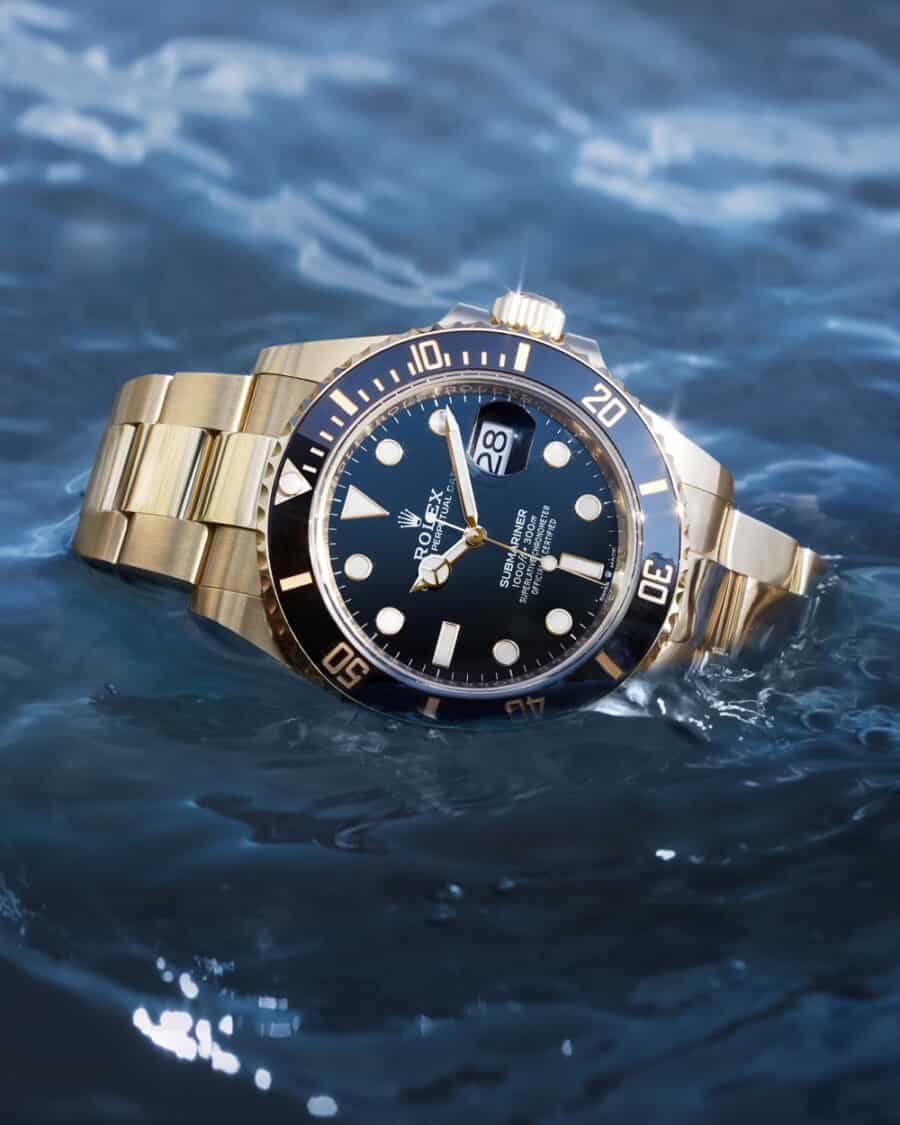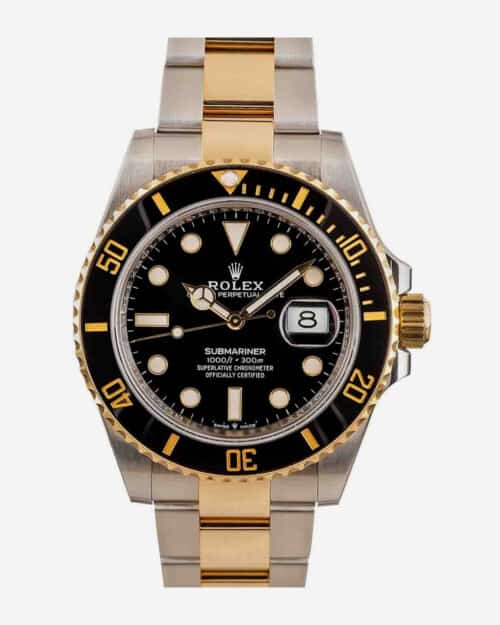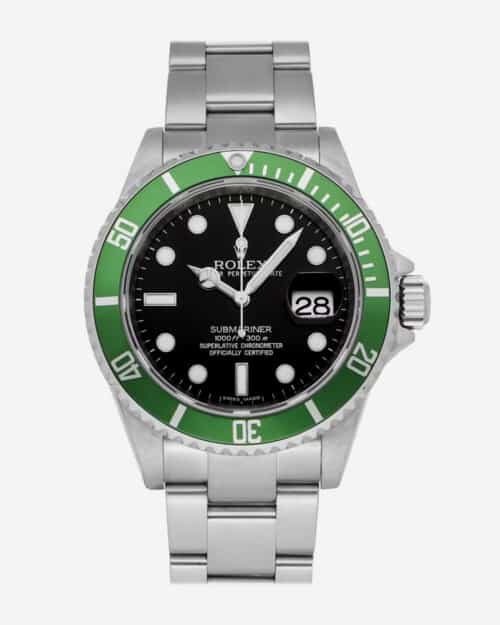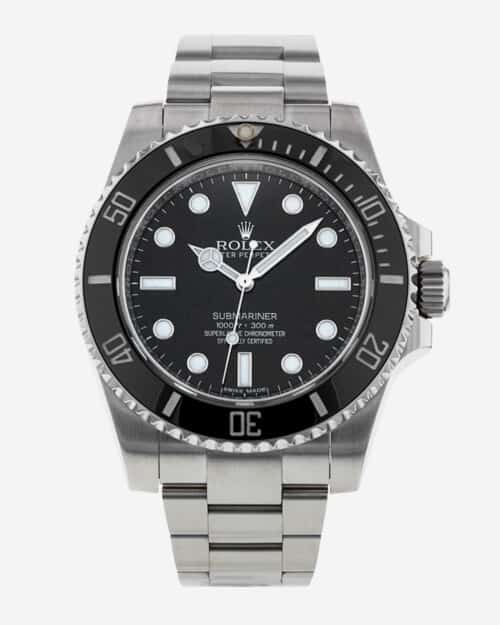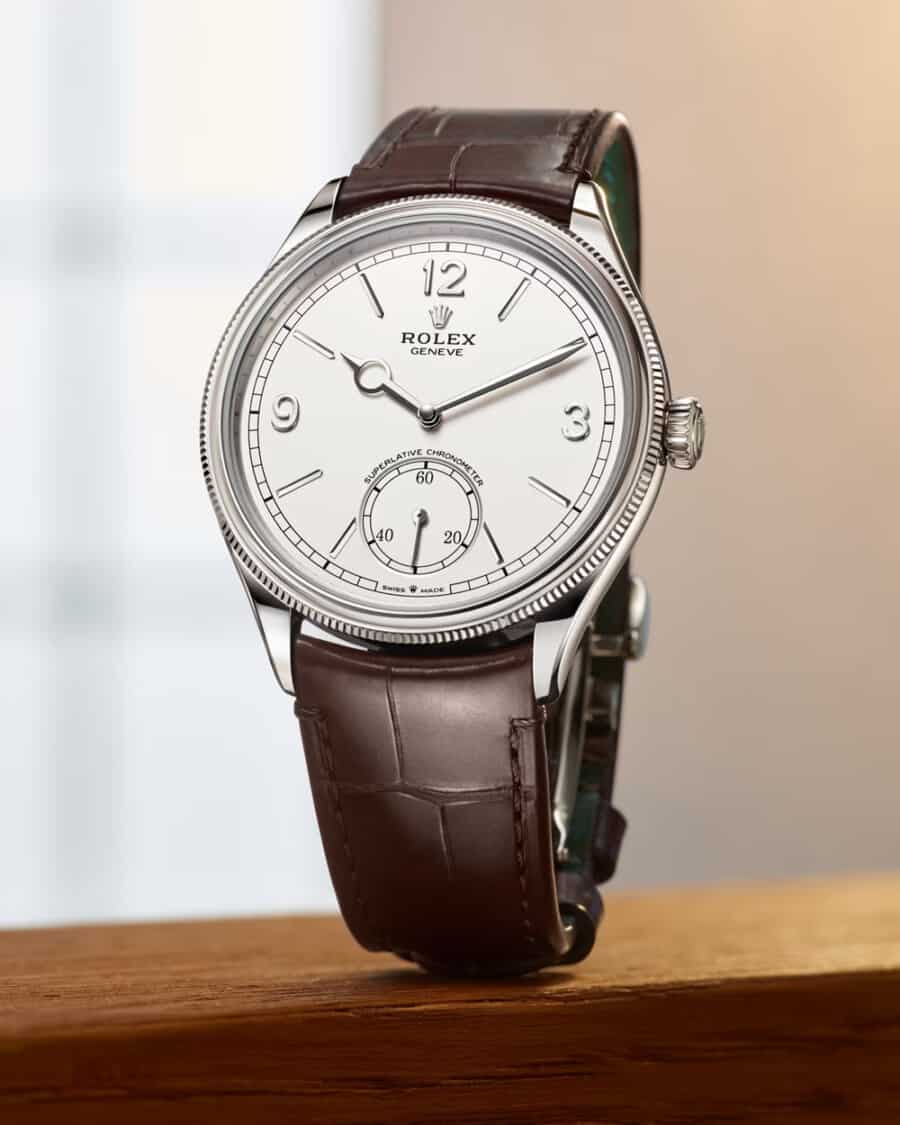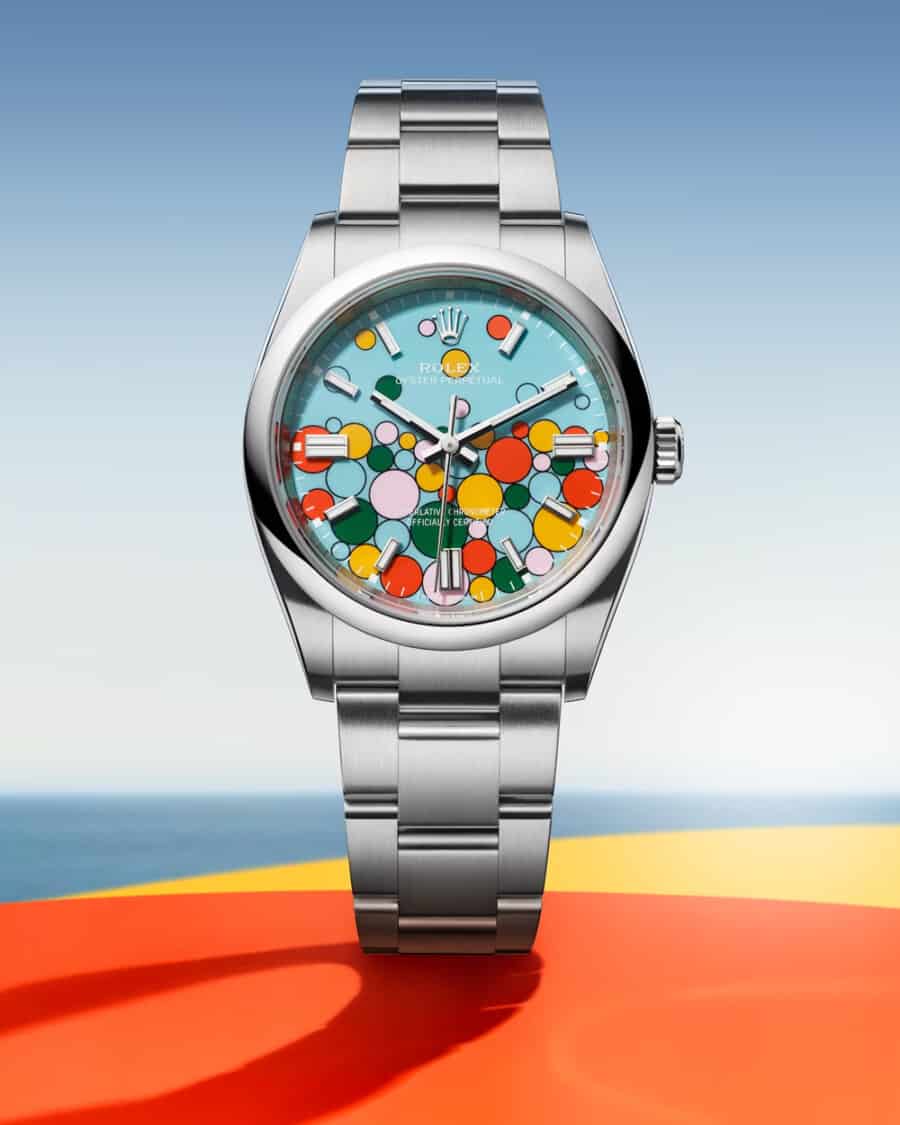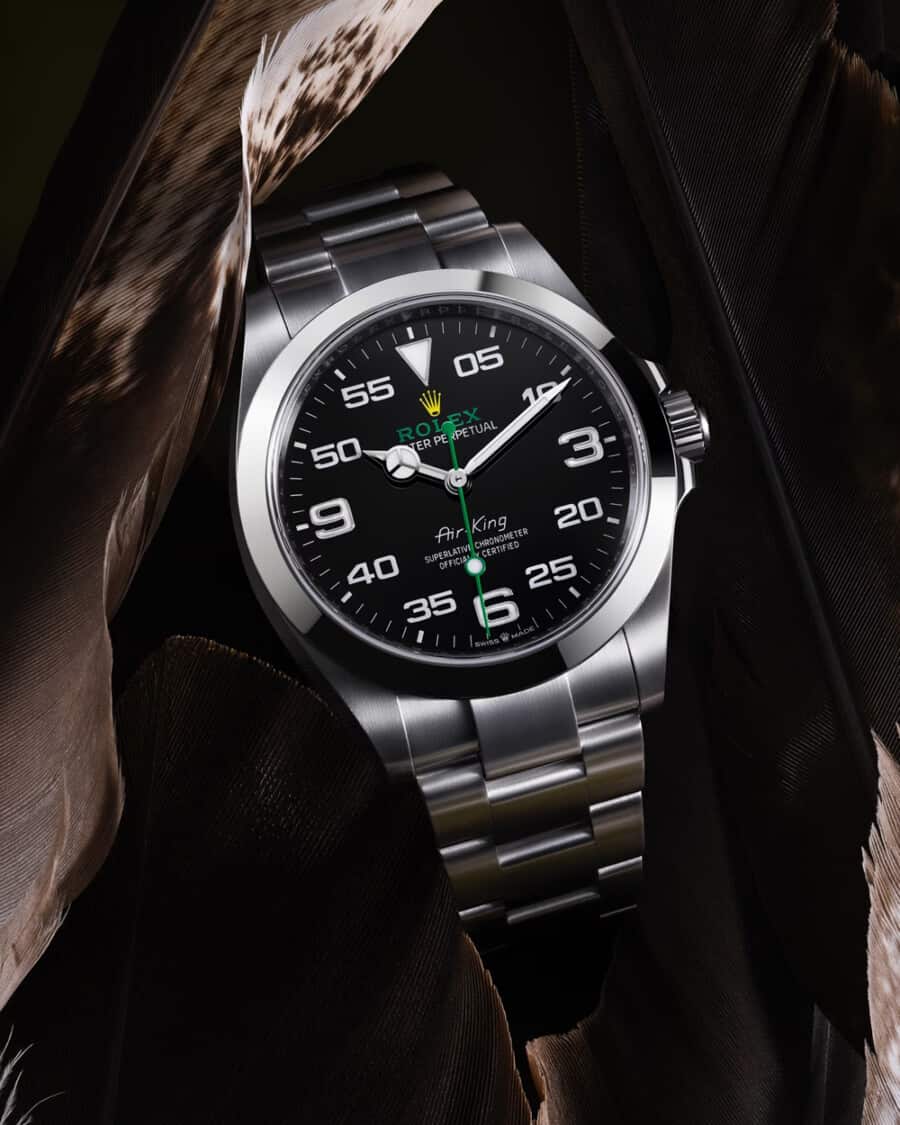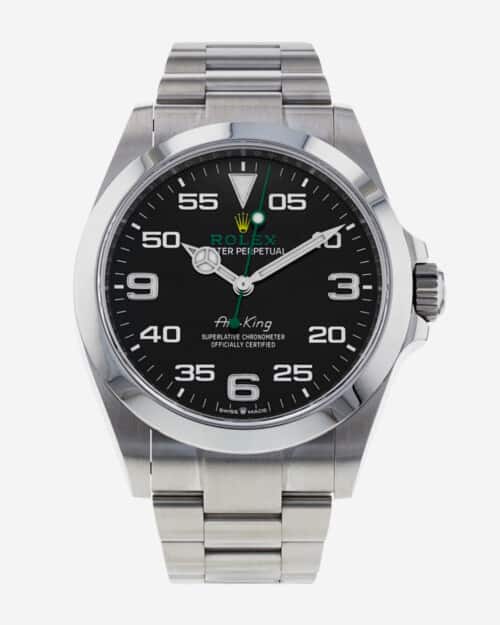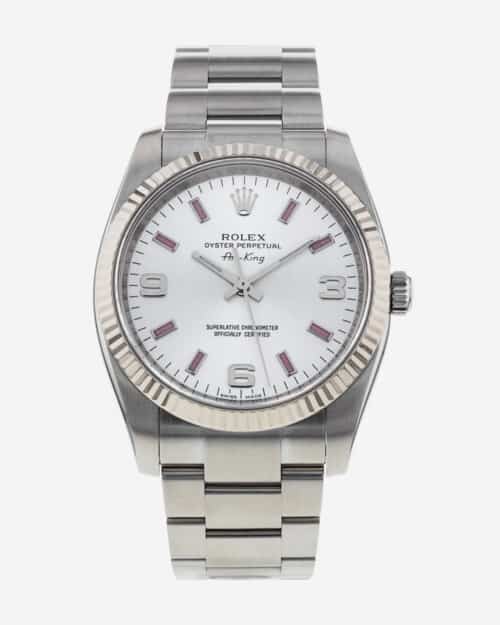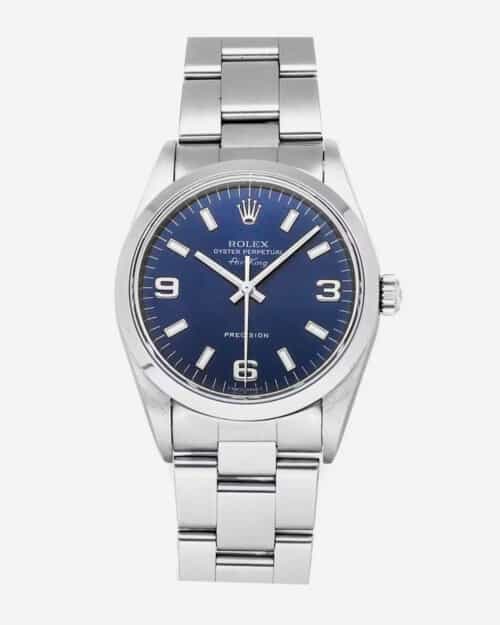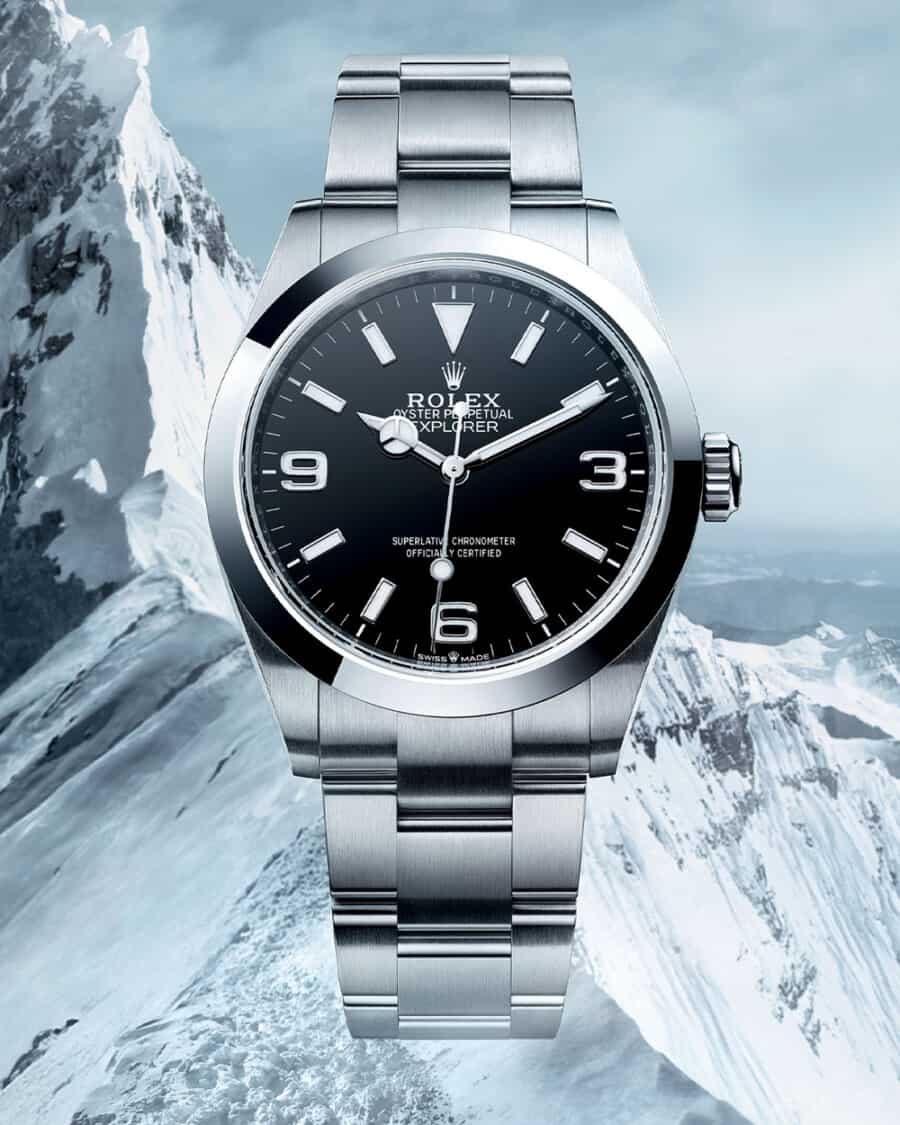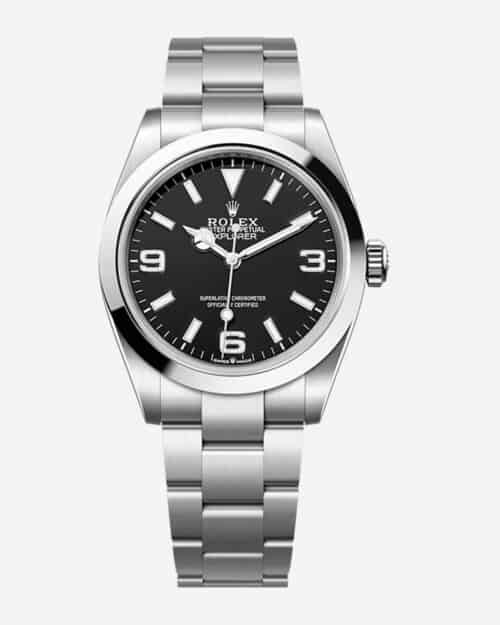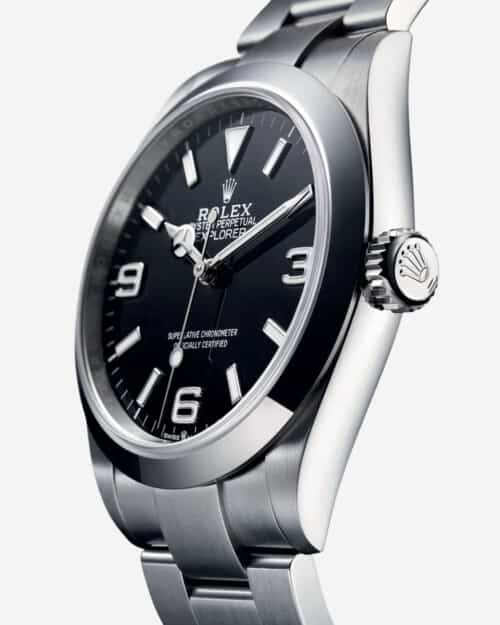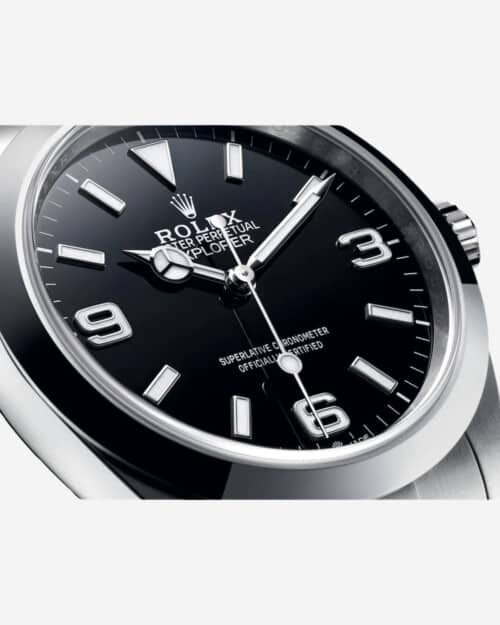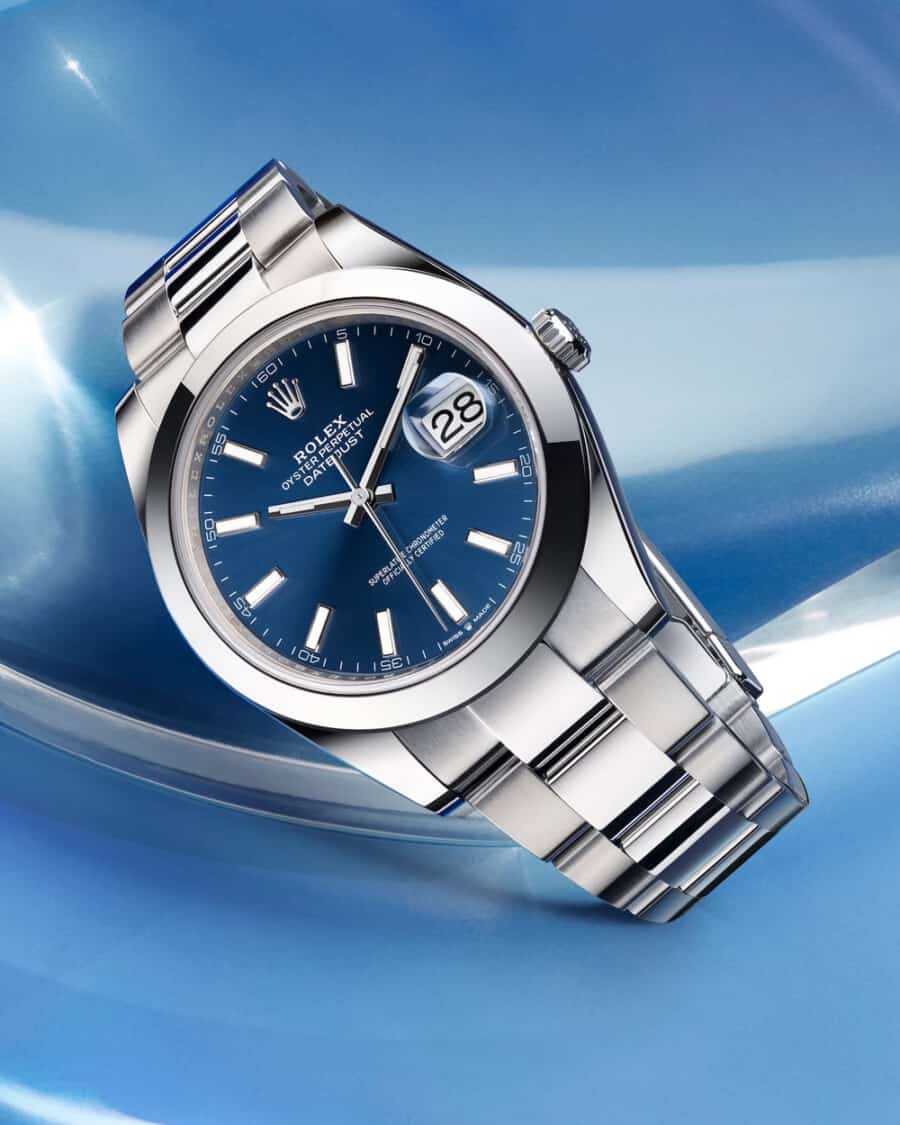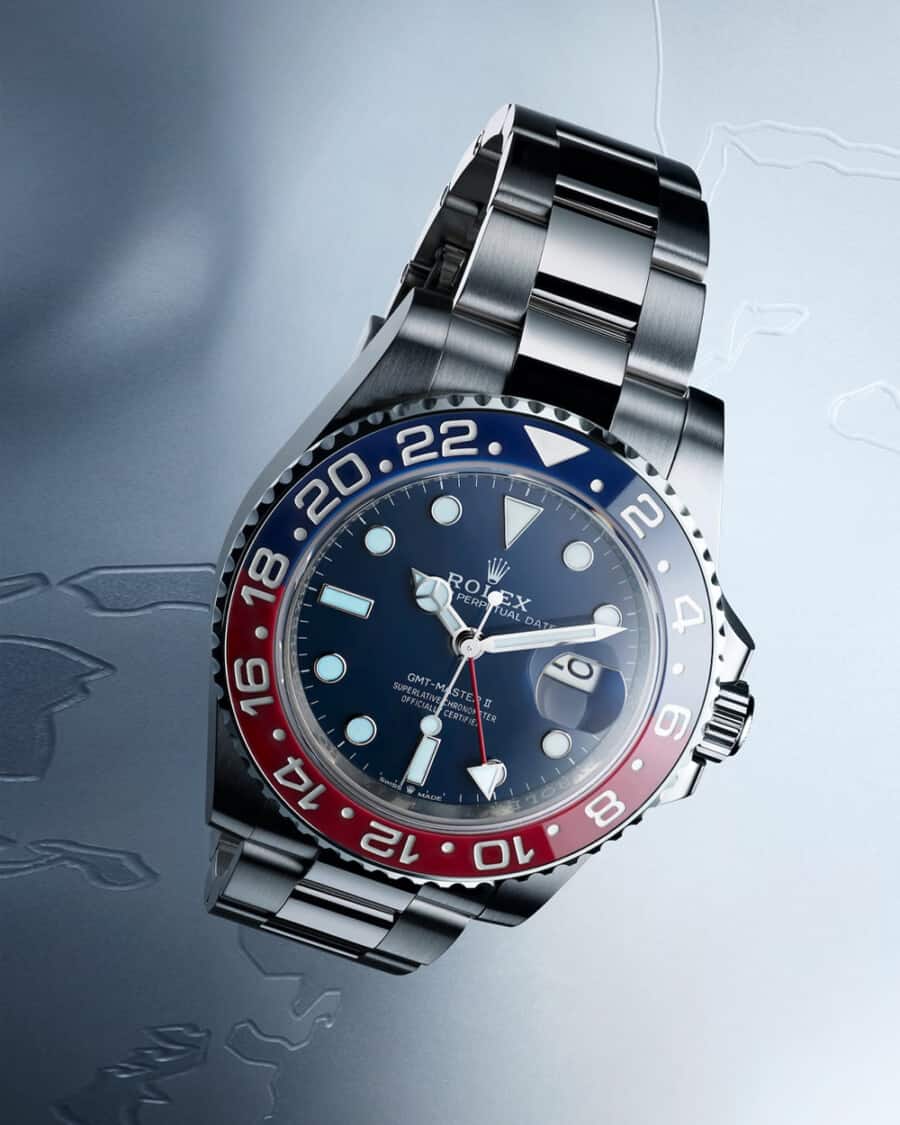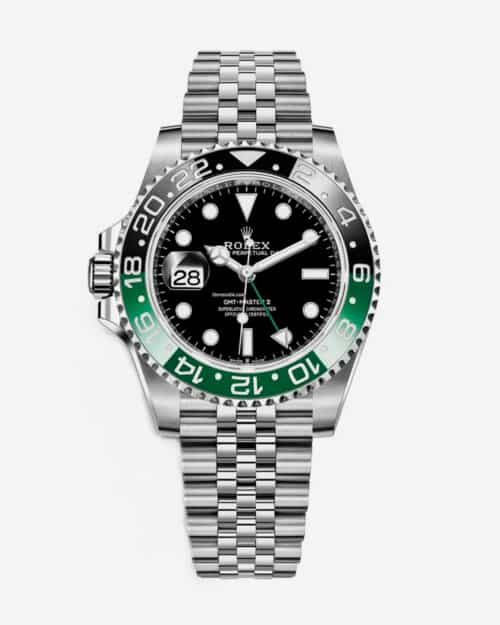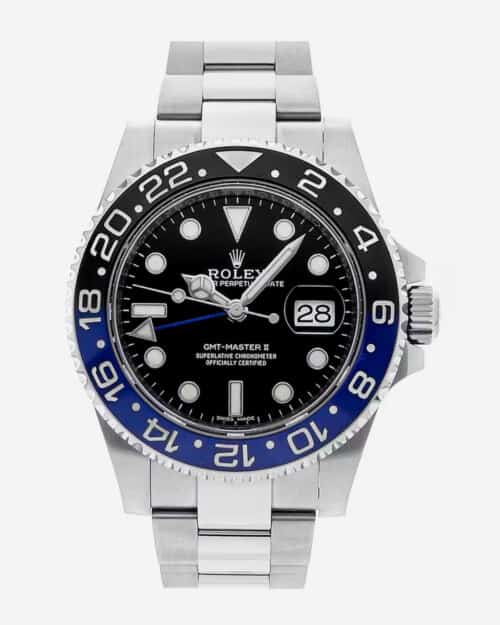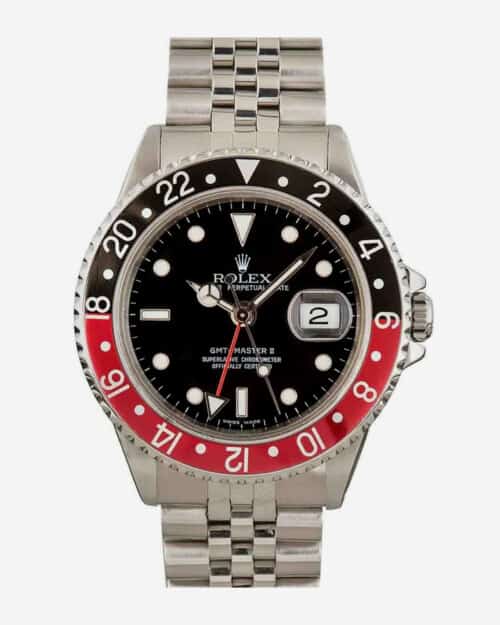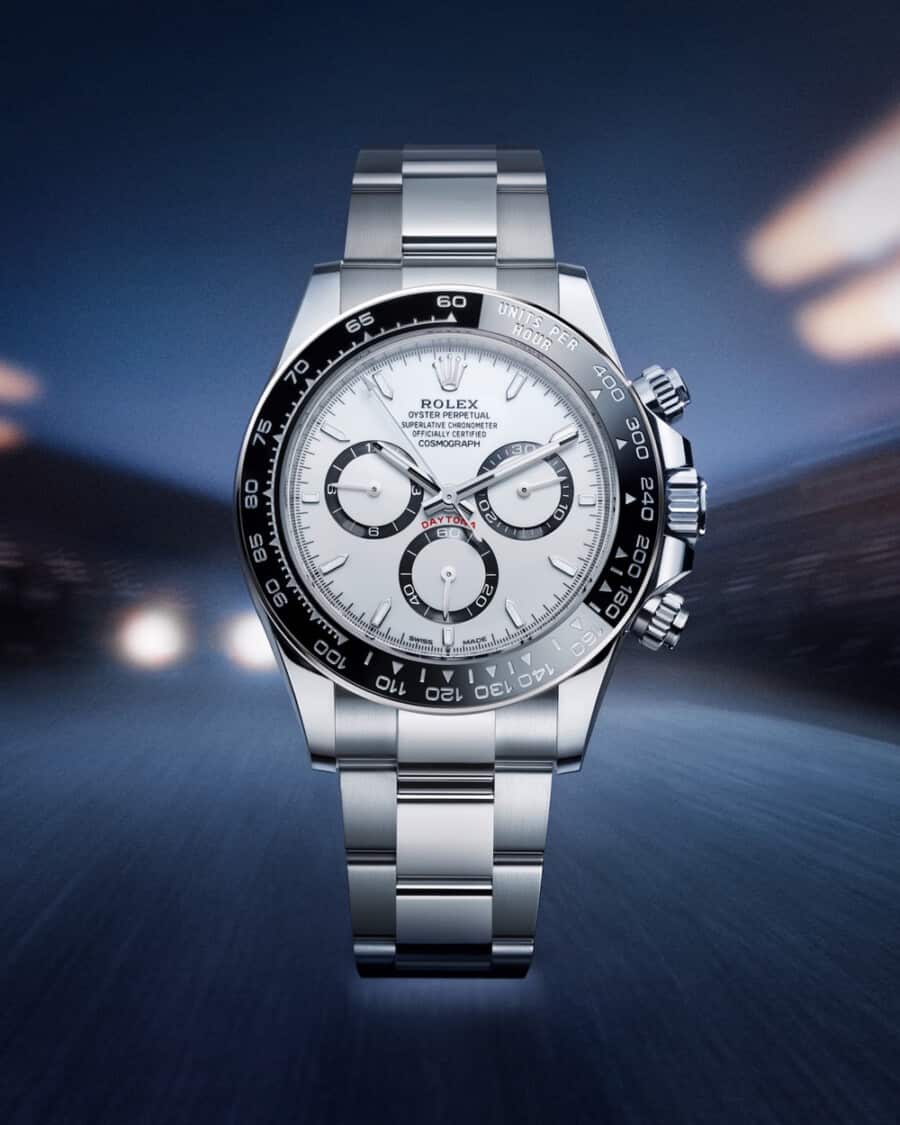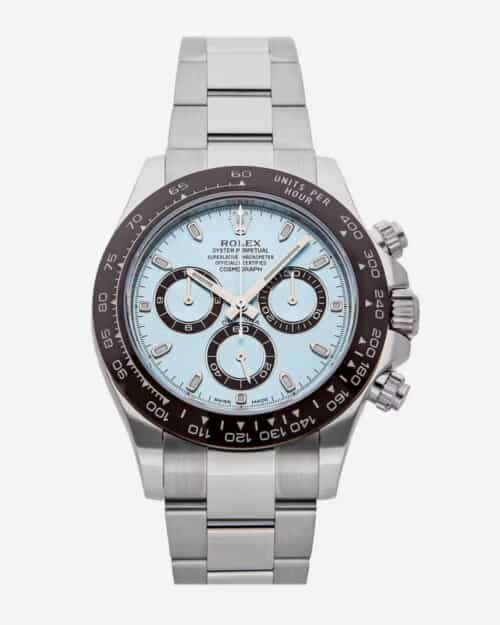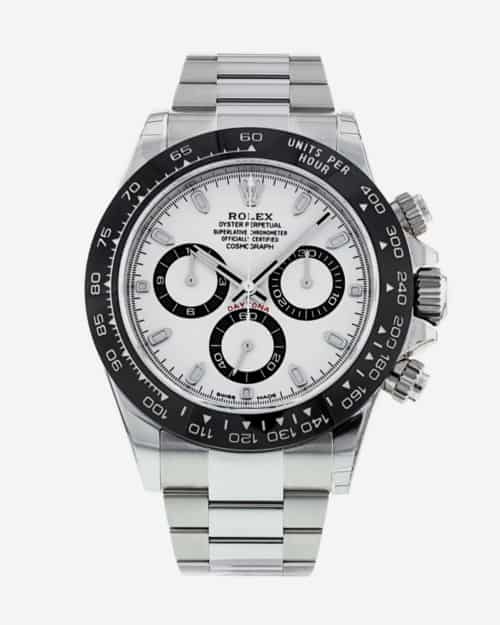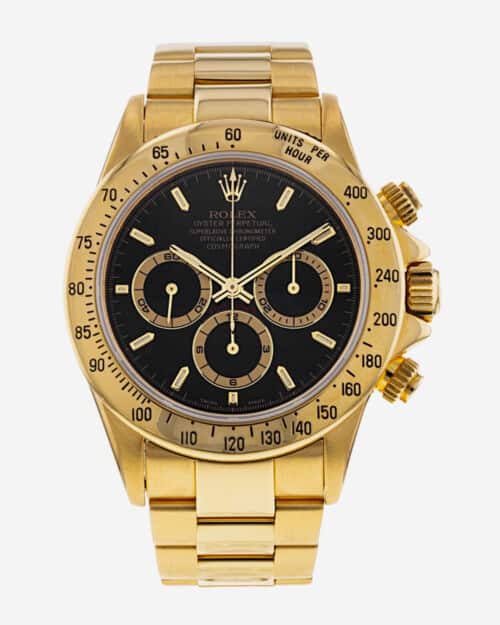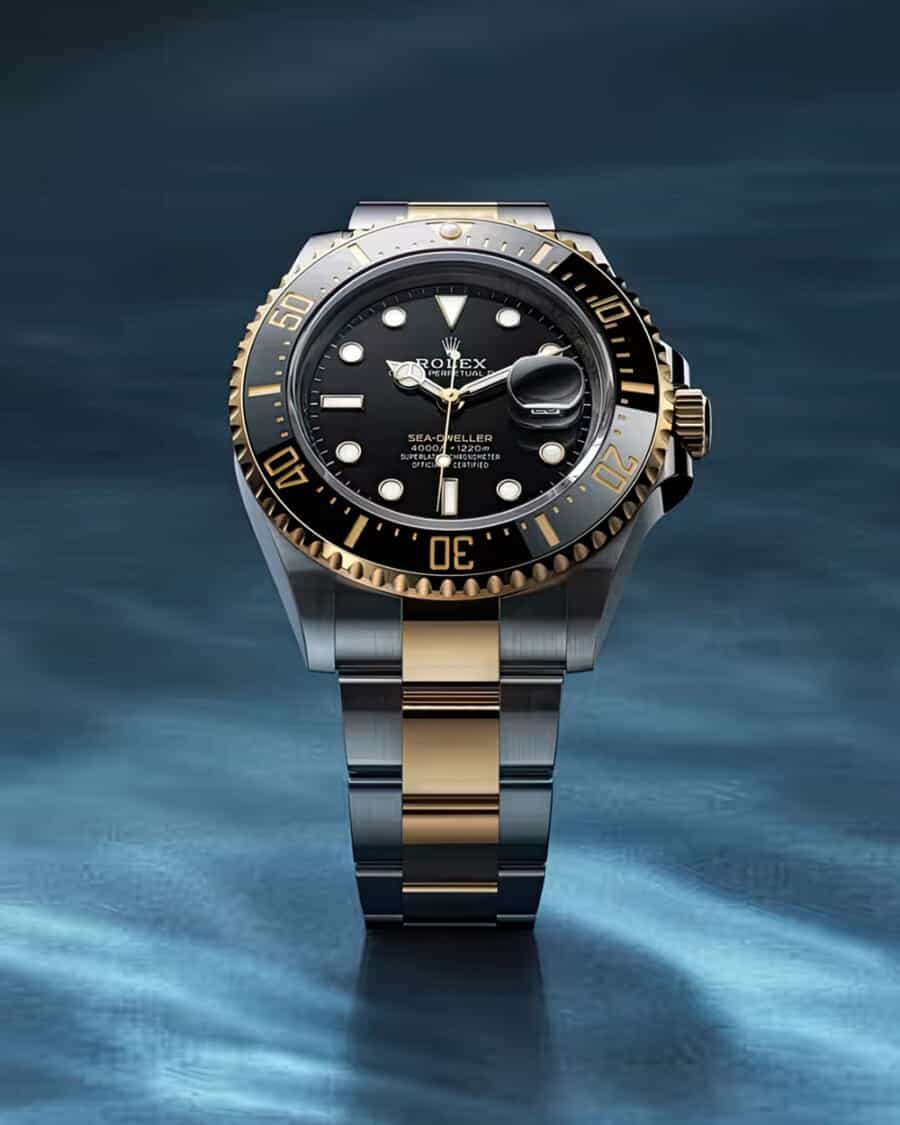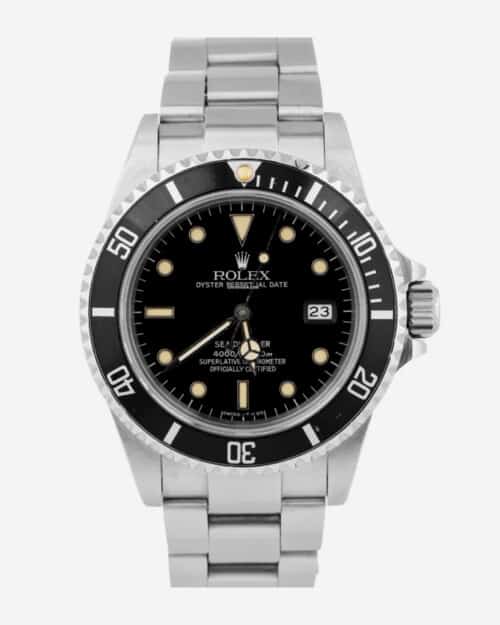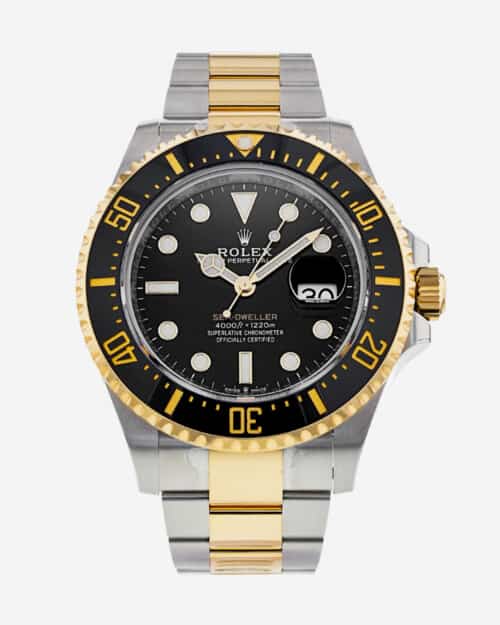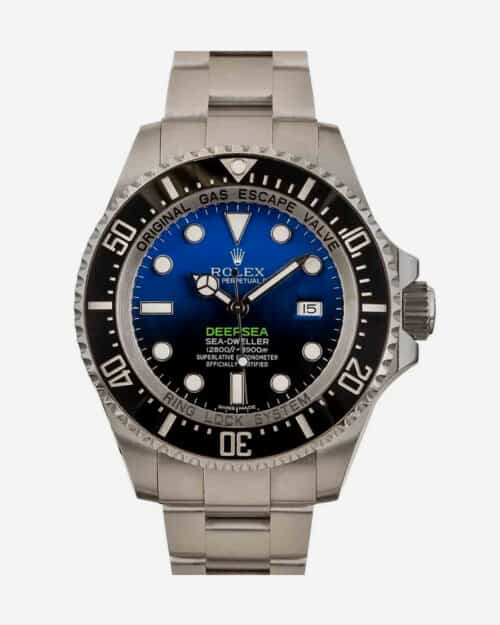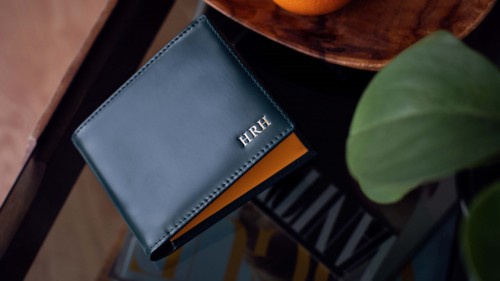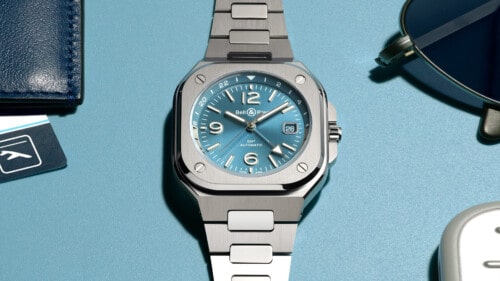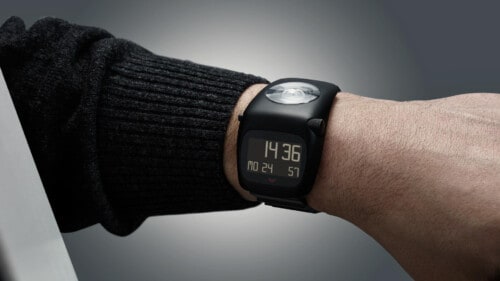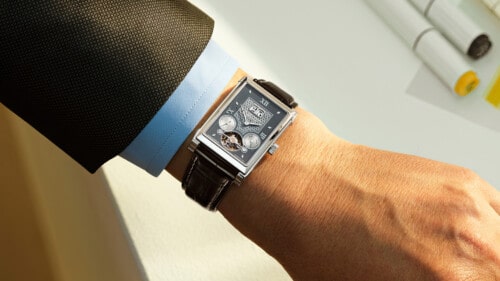
9 Best Modern Rolex Watches (That You Might Never Get To Buy)
These are the most desirable modern Rolex watches, from all-time classic models through to new limited editions. And how to get your hands on them.
Hans Wilsdorf was clever to choose a crown as Rolex’s emblem when he founded the brand back in 1905. Because when it comes to watchmakers, it really is king. Ask anyone to name a watch brand and they will say “Rolex”. The scarcity of its steel models basically keeps the pre-owned market in profit, and it crops up in the song lyrics of everyone from Kanye to Jay-Z.
This isn’t a case of all marketing, no mechanics either; Rolex is also a groundbreaking manufacture. Its 1954 GMT Master pioneered the second time zone, which was created for Pan-Am pilots who were experiencing jet lag for the first time thanks to longer flight durations. Being able to see home and local time simultaneously was thought to help. Then there’s the Milgauss, its anti-magnetic watch created for people working in highly magnetic areas such as power plants, medical facilities, or early nuclear research labs.
There’s also a reassuring sameness to a Rolex. This isn’t the place for flashy limited editions or crazy complications – there’s no Rolex with a tourbillon or a Marvel character on the dial. Rolex’s innovations are about what goes on under the bonnet with incremental advances in movement technology, or perfecting a strap so it can accommodate the increase in wrist size that comes with hot weather.
Then there’s the supply and demand situation – the latter always being greater than the former – that gives a feeling of rarity despite the brand’s ubiquity. But which Rolexes you should be coveting now? Here’s a mix of models and collections to be lusting after. Even if, chances are, you’ll never get to wear them.
Rolex Submariner
Let’s start with the obvious. Everyone wants a Submariner. It’s the classic, the ultimate, and, in steel, nigh on impossible to buy new. This is the watch with the waitlist – the one you’ll have to spend years, and thousands, currying favour with your local dealer to even get a chance of putting one on your wrist.
Launched in 1953, it was the first diver’s watch good to 100m. Very little has changed design-wise. It now has a water resistance of 300m and the movements – Calibre 3230 without date, 3235 with – are in-house and fitted with Rolex’s exclusive blue Parachrom hairspring, which is 10 times more precise than a traditional hairspring in case of shocks.
The last time a new Sub was launched was 2020, when its case was boosted to 41mm. Prior to that there hadn’t been an update to this classic watch since 2008. Who knows when the next version will appear, but safe to say only the chosen few will be permitted to buy it.
Buy it now: Your best bet with this, and almost every other steel Rolex, is go pre-owned. Try Watchfinder, Bob’s Watches or WatchBox.
Rolex Perpetual 1908
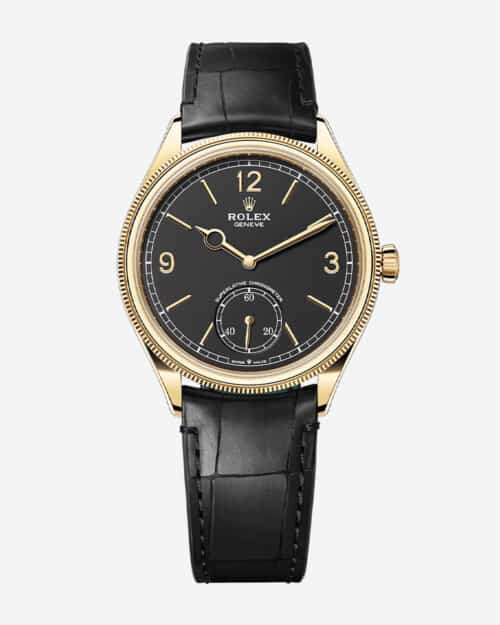
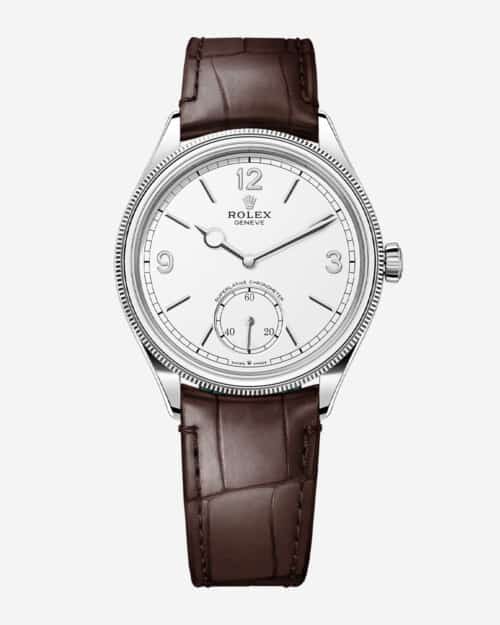
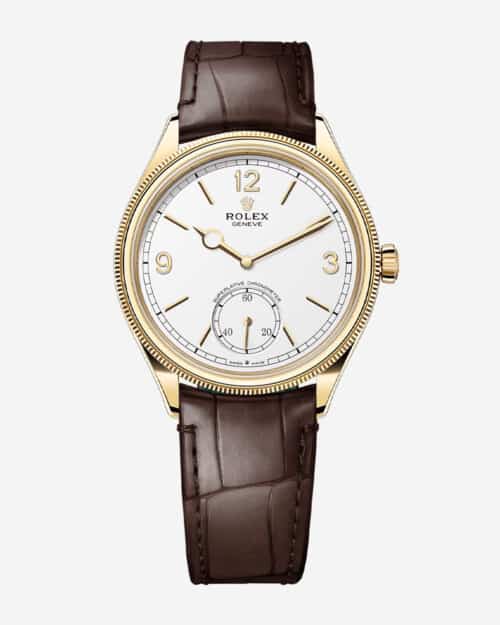
Actual newness. From Rolex. It nearly sent Watches and Wonders 2023 attendees into shock, Rolex announcing an entire new collection. Based on a vintage model from 1931, it is elegant and refined. Definitely more ‘wear with a dinner suit’, than ‘hang out on a yacht’, which is Rolex’s usual vibe.
1908 was the year Hans Wilsdorf registered the Rolex name and the design – with its mix of sans serif Art-Deco-style numeral on the dial, and more ornate ones on the sub dial – references the burgeoning modernity of the era that contrasted with the still-evident influences of a Victorian past.
The real shock is the sapphire caseback. As a general rule Rolex doesn’t show its movements. But here you marvel at its use of Côtes de Genève finishing, admire the Syloxi silicon hairspring, delight in the Chronergy escapement. It almost makes you want to wear it dial-side down.
Buy it now: As this is a new model, it’s uncertain whether you actually can walk into a store and buy one, but you can check out its specs at Watches of Switzerland.
Oyster Perpetual Celebration Motif ‘Bubbles’
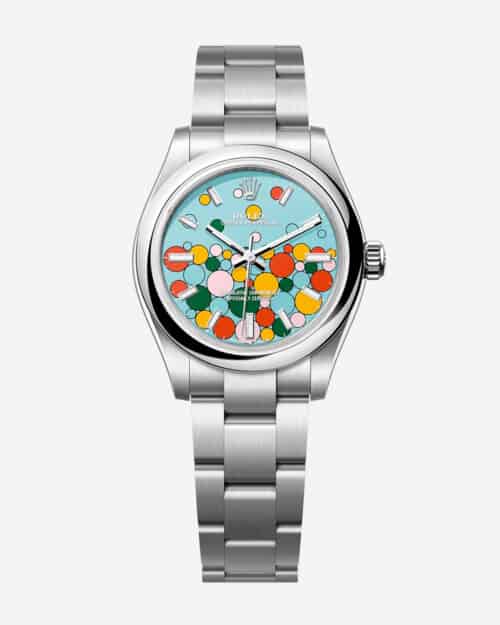


Another Watches and Wonders 2023 shock was this. A Rolex Oyster Perpetual with a gloriously silly dial.
In many ways it is a typical Rolex move – one that says, “You think you know us? You don’t”. In other ways it’s a total departure from its usual restraint (see also the emoji watch. Yes, you read that right.)
Each of the different coloured bubbles are in the same shades as the now no-longer-available lacquered dials introduced to the Oyster Perpetual collection in 2020. Everything else is typically Rolex: the Oystersteel case and bracelet, in-house 3230 movement with 70 hours power reserve. It’s just wearing a much happier face.
Buy it now: This delight comes in three sizes, 31mm, 36mm and 41mm and is allegedly available from $5,650/£5,100. According to Rolex’s website that is.
Air King
Back to the classics. The Air King dates back to 1945, when Wilsdorf wanted to create an entire line dedicated to pilots. Back then the King was just one part of the Air series, which included an Air-Giant, Air-Tiger and Air-Lion (Rolex should bring these back for their names alone).
The first iteration didn’t have any of the aesthetic codes we’ve come to expect from a pilot’s watch – no legible numerals, chronograph counters and certainly no slide rule. It looks more like a dress watch.
From 1957, and for the next 32 years, the Air King was a part of the Oyster Perpetual collection, and looked very much like an Oyster. In 1989, the 3-, 6- and 9-hour markers were replaced with Arabic numerals in a recognisable ‘Air King’ font.
The 2016 overhaul, ref. 116900, was incredibly polarising. The aesthetic melange of the supersonic dash clocks Rolex designed for the Bloodhound, Explorer numerals and Milgauss case wasn’t to everyone’s tastes, while the lack of crown guards and curved case sides meant Rolex purists didn’t consider it a proper tool watch.
In 2022, Rolex re-released the Air King with crown guards, a straightened-out case and a new movement. Finally, an entry-level steel sports Rolex you might actually be able to buy.
Buy it now: Not sure what the ‘buy it now’ status is, but you could put in a pre-order at Pragnell or look preowned at WatchFinder.
Explorer 40
Despite its name this is not the watch that accompanied Sir Edmund Hillary and Tenzing Norgay to the top of Everest in 1953, but it is the watch Rolex designed to celebrate their victory. It wasn’t until 1955 that the Explorer as we know it came to be; before that it was basically a modified Oyster Perpetual.
In 2021, Rolex decided to ditch the 39mm case in favour of a very historically accurate 36mm. And now it’s made the decision to go big with a 40mm for the Explorer’s 70th anniversary.
It’s basically the same as the 36mm – movement is the same, the position of the word ‘Explorer’ underneath the 12 o’clock (not at six o’clock as it was on the now-retired 39mm), the bracelet and case all identical. The only difference is it’s bigger.
It’s the perfect Explorer for those who like its looks but whose wrists look better in a larger case diameter.
Buy it now: Again, as with all steel Rolexes you don’t know if you can walk into a store and pick one up, but expect preowned versions to become available soon.
DateJust
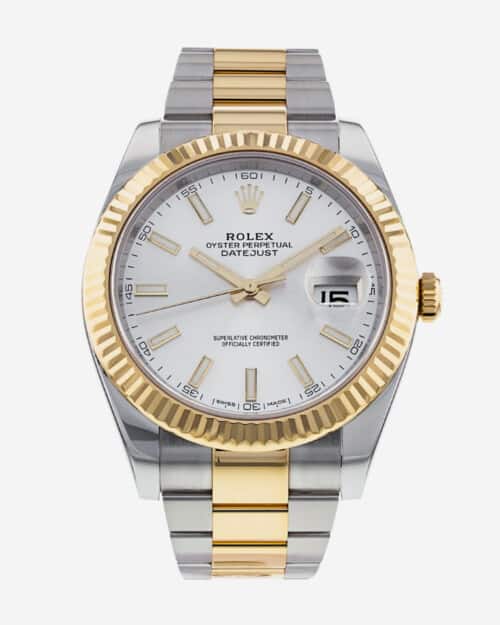
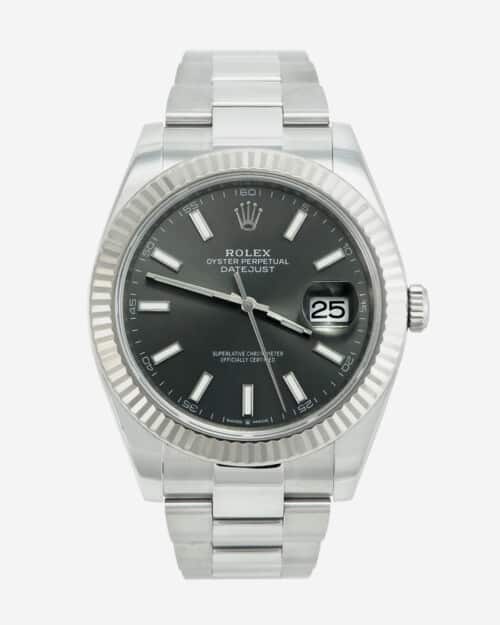
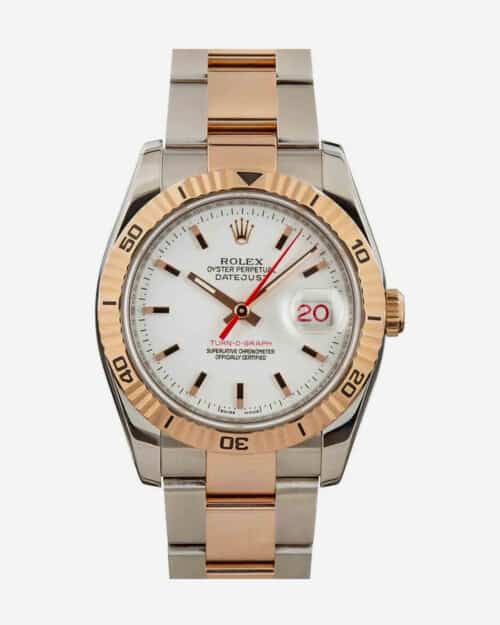
While the DateJust can be seen by some as merely a gateway to a Submariner (the joke is if you flip a lot of them, you’ll impress your dealer enough to finally allow you to buy your Sub), it is actually an icon in its own right.
It was launched back in 1945 to commemorate the brand’s 40th anniversary and was the first self-winding wristwatch to have a date window that would automatically change at midnight. It is also the oldest of Rolex’s collections still in production today and was the first outing of the brand’s five-piece metal link bracelet known as the Jubilee.
Unlike other Rolexes, this isn’t designed for a sport or a particular profession, it’s just a great-looking everyday wearer. It first debuted in gold but now is available in pretty much any combination of metal, dial colour, size or bracelet you’d like.
The DateJust has the most varied style options of any Rolexes, meaning there is the perfect version for everyone.
Buy it now: Watchfinder, Bob’s Watches and WatchBox all have preowned versions available. Or just have fun customising a new one at Rolex.com.
GMT-Master II
The watch that spawned a thousand nicknames for its bezel. There’s the Batman (black and blue, ref. 116710BLNR from 2013); the Green Lantern (2022’s left-handed Destro with black and green bezel); the Hulk (green dial and bezel ref. 116610LV); the Kermit (green bezel, black dial ref. 16610LVA in 2003 for the Sub’s 50th anniversary); and, of course, the Pepsi (blue and red, the colour combination originally created for Pan-Am for the GMT Master).
As the name suggests, the GMT-Master II is the next-gen GMT Master but with three time zones instead of just two. Released in 1983, the ref. 16760 was the first GMT Master II. Due to its larger proportions and rotund profile, it earned an unfortunate nickname, Fat Lady. She only lasted five years, making her one of the shortest production runs in Rolex’s history, which ironically now makes her rather desirable for collectors.
Given it is the bezels that people tend to remember about the GMT-Master I and II, the decision to switch to ceramic, or rather Rolex’s proprietary Cerachrom, in 2007 phased out the bicolour bezel until Rolex could figure out how to make a two-tone monobloc version. Which it did eventually, in 2013.
Since 2019, all GMT-Master IIs are powered by the in-house Calibre 3285, which has an impressive (even by Rolex’s standards) 10 patent applications. It has the brand’s patented version of the Swiss lever escapement – the Chronergy escapement – a power reserve of 70 hours and precision of -2/+2 seconds a day, which adheres to Rolex’s ‘stricter than COSC’ Superlative Chronometer certification.
Buy it now: If you have deep pockets, it has to be 2022’s Destro, which is already popping up on pre-owned platforms, such as Chrono24.
Cosmograph Daytona
Aka Paul Newman’s watch. Which obviously you won’t be buying because it sold at auction in 2017 for $17.75m. However, you can (sort of) have a modern version. The original Daytona was first launched in 1963 and was named after the race for which Rolex served as official timekeeper in 1962.
It wasn’t Rolex’s first chronograph (there were pre-Daytonas), and interestingly it wasn’t a success when it first launched. It became famous when actor and race car driver Paul Newman was seen wearing the ref. 6239.
In the 1980s it had a kinship with Zenith, when it was powered by an El Primero. Obviously now it has an in-house movement – the 4131 – and for its 60th birthday in 2023 it received a bit of a makeover.
The Cerachrom bezel was updated so its edges were in the same metal as the case. The hour markers were slimmed down, and lugs modified. It was also issued in a beautiful platinum version, with an ice-blue dial surrounded by a chocolate Cerachrom bezel.
Surprisingly, this model also comes with a sapphire caseback through which can be seen the 4131so you can admire the cut-out osciallating weight and new Rolex Côtes de Genève, a subtly different finish from the traditional version.
Buy it now: You probably won’t go platinum, but it’s nice to dream. If Watches of Switzerland will let you try it on, that is.
Sea Dweller
If the Submariner is the dive watch for people who don’t like water, then the Sea Dweller is its pumped-up, all-action brother. It was first created, in 1967, for actual divers; saturation divers, in fact – those hardcore people who spend so long underwater at great depths, their blood becomes saturated with helium, among other gases.
Rolex consulted with COMEX (Compagnie maritime d’expertise) and legendary diver Jacques Cousteau to create a timepiece fit for purpose. Finally, it was made available to the general public in 1971, allegedly due to the delay in Rolex receiving a patent for a helium escape valve.
The first Sea Dweller prototype had a water resistance of 1,500m, which was reduced to 610m for the civilian edition. If you’re into icons, the Sea Dweller to own is the ref. 16660, which was the transition reference between the vintage and modern iterations. The water resistance was doubled to 1200m, it was given a sapphire crystal (one of the first Rolexes to have it instead of plexiglass), a new higher-frequency movement and a quick-set date change.
The modern Sea Dweller is larger than its predecessor – 43mm as opposed to 40mm – and the Cyclops magnifier has been added, which gives purists something to rant about on forums, but it is still very much the diver’s diving watch.
Buy it now: Get your mitts on a vintage 16660. It’s a collector’s choice and available on Chrono24.
